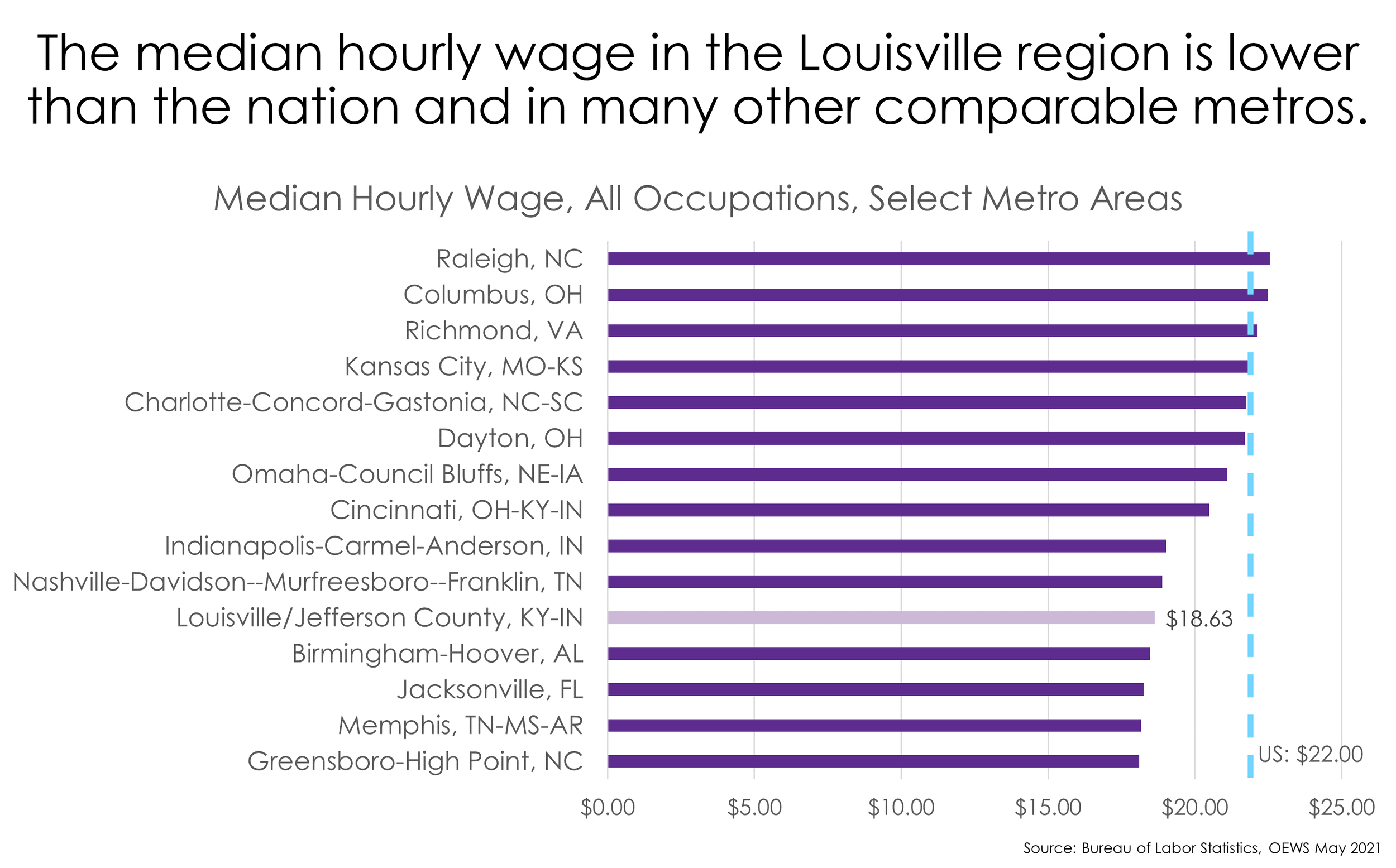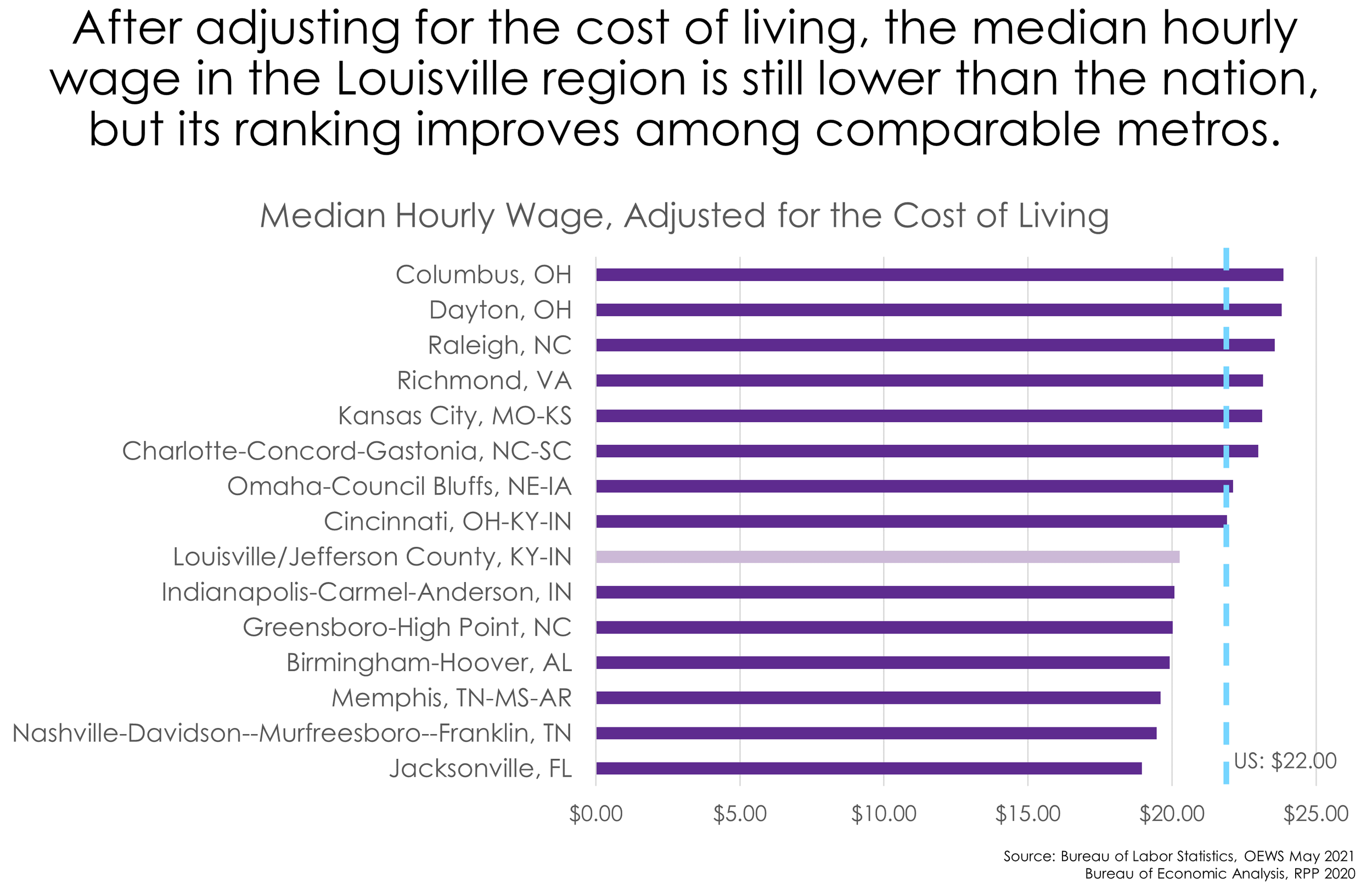What updated occupation data shows for the Louisville region
The Bureau of Labor Statistics released new data last month that gives us an update on the region’s employment and wages by occupation. Occupational data is insightful because it is classified by the daily activities of a worker, regardless of what industry the worker is employed in. Some occupations are concentrated in a particular industry, while other occupations are found across the majority of industries. This dataset also provides us with median wages, as opposed to the more readily available average wages. Median wages are a preferred measure to reflect the typical worker because they are not as affected by high-earning outliers.
The largest occupation in the Louisville region is laborers and hand freight, stock, and material movers, commonly known as material handlers or warehouse workers. The majority of these workers are employed in the logistics industry. The second largest occupation in the region is miscellaneous assemblers and fabricators, commonly known as team assemblers. The majority of these workers are employed in the manufacturing industry. The logistics and manufacturing sectors are critical to the region’s economy, and employ large numbers of entry-level workers.
Overall, 10 occupations account for a quarter of the region’s employment. 1 out of every 4 workers is employed in one of the following job types.
Among the region’s largest occupations, half have a median hourly wage less than $15 per hour, less than the living wage for a single adult with no children. 8 out of 10 pay less than the family supporting wage, defined as the living wage for two working adults with two children. That is, a family of four with two working adults employed in some of the region’s most common occupations could not afford to make ends meet.
Across all occupations, the region’s median hourly wage is $18.63. This is lower than the national median wage of $22 per hour, as well as lower than many comparable metros. Among a list of 15 peer cities, the Louisville region’s median hourly wage ranks 11th.
The relative cost of living in a given metro is an important consideration, as the purchasing power of a given wage could be higher or lower given how expensive it is to live within a particular region. After adjusting for the cost of living, the region’s median hourly wage is still lower than the nation. However, its ranking among peer cities improves to 9th highest.
The latest occupation data from the Bureau of Labor Statistics shows that some of the region’s most common occupations do not provide a living wage. Compared to other similar metro areas, Louisville has lower wages, even after adjusting for the cost of living.
The “Great Resignation” has made many headlines during the economic recovery. In a previous post, I covered how this might be more accurately described as a “Great Reshuffle.” Given the current labor market conditions, workers in low-wage occupations have an opportunity to quit their job and find employment in another position with a higher wage (whether in the same occupation or not). Employers making an investment in their workforce through higher wages and other benefits are winning over workers in these low-wage occupations.




